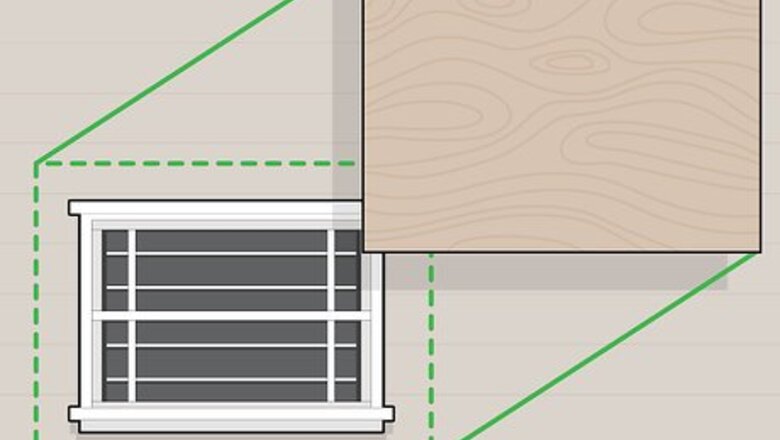
views
X
Research source
If you live along a coastline, it is reasonable for you to be concerned about your windows. Consider a cheap DIY fix like hurricane film or plywood covers. Installing metal, plastic, or fabric over your windows, or replacing them with high-impact glass, will protect your windows and qualify you for lower homeowner's insurance premiums at the same time.
Protecting Your Windows on the Cheap
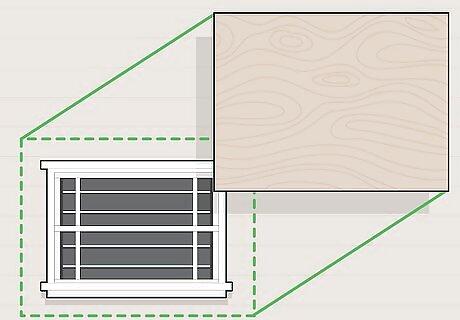
Build plywood covers for your windows. Plywood is a cheap and popular option for covering windows. Pick plywood sheets that are at least ⁄8 inch (1.6 cm) thick. Measure the perimeter of all your windows. Cut the plywood so that it extends 8 inches (20 cm) past the window in every direction. Install the plywood covers before a storm with bolts, screws, window clips, or barrel bolts every 12 inches (30 cm). Attaching plywood to the window frame will help prevent flying debris or pressure changes from breaking the glass. When installing plywood, get someone else to help you lift the heavy panels. Plywood is not up to code in many areas, and is unlikely to lower your insurance premiums.
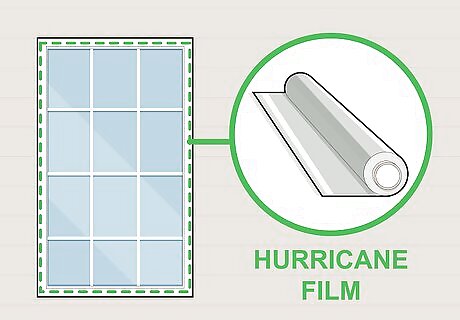
Cover your window glass with hurricane film. Hurricane film is an affordable transparent plastic that you can leave in place year-round. Measure the perimeter of your windowpanes and buy enough film to cover each windowpane entirely. Peel the film off its backing and stick it slowly to your windowpanes. Hurricane film does not prevent your window frame from blowing off, and might not even protect your window from breaking. However, it will protect you from glass shards, and will keep the wind out of your house. Homeowner's insurance premiums are not usually lowered for hurricane film.

Keep your windows closed during a storm. Do not open your windows during a storm. Some people say this will lower the pressure in your house, but you actually want to keep the pressure from the hurricane out of your home.
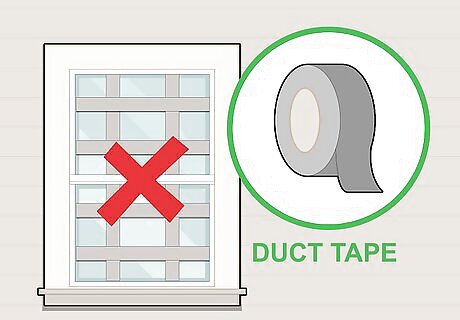
Do not put duct tape over your windows. There is lots of misinformation about hurricane safety, and one persistent myth is that putting tape in an X or a grid over a window provides reinforcement. This is untrue! Duct tape will not provide protection from a hurricane.
Installing Permanent Storm Protections
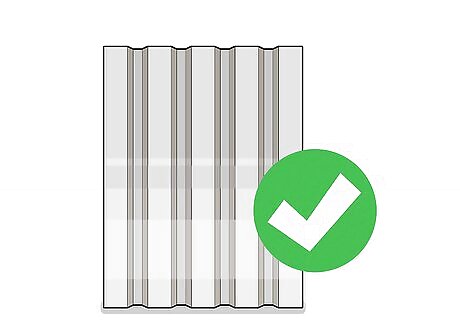
Order metal or plastic storm shutters. Storm shutters, or panels, come in aluminum, steel, or reinforced plastic. Plastic is more expensive, but will also let in light, so you won't be left in darkness if a hurricane blows out the lights. Depending on the kind of shutters you buy, you may need panels the same size as your window, or panels that are several inches larger on every side. All hurricane shutters have a width of 15.25 inches (38.7 cm). Order shutters, H tracks, and F tracks from your local home construction store or from a metals or plastics distributor. If you are bolting your windows instead of installing tracks, you will not need to buy H or F tracks. Purchasing shutters will usually lower your homeowner's insurance premium. Plastic will run you about $18 sq. ft, while metal will fall around $11 sq. ft.
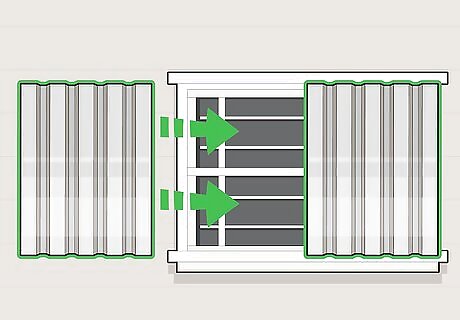
Install your storm shutters or hire a professional to install them. If you're doing it yourself, measure the window height and the shutter height. Subtract the window height from the panel height, then divide the result by 2. Bolt the H track that number of inches or centimeters above the window opening. Then install the F track the full length of the panel below the H track. For instance, if your panels are 6 inches (15 cm) taller than your windows, install the H track 3 inches (7.6 cm) above the window. Slide the shutters into the H track. Attach the bottom section of the shutters to the F track with bolts. Besides the instructions, the bolts, and the wing nuts included with your purchase, you will need a screwdriver.
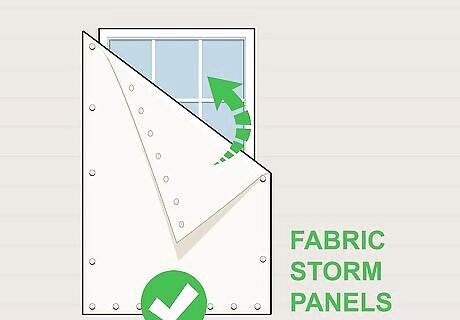
Consider investing in fabric storm panels. Fabric storm panels are more expensive than metal and plastic panels, but they come with some advantages. Once they are mounted, they are very easy and quick to put up, meaning it won't take you long after a storm warning to protect your windows. They're also lightweight, so you can put them up yourself, and they fold up for storage. Find a dealer online or at a home improvement retailer near you. In most cases, your dealer will install the fabric panels for you. If not, follow the included instructions for installation. Fabric panels are just as effective as metal or plastic shutters, and will also qualify you for savings on insurance. PVC fabric runs around $12 sq. ft, whereas Kevlar will cost you nearly double that.
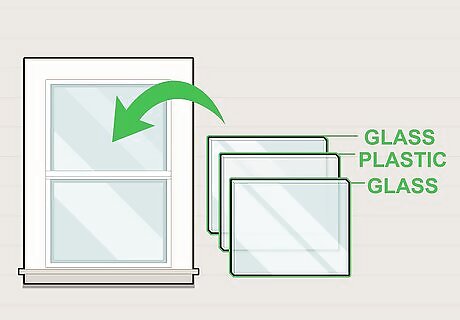
Replace your windows with high-impact glass. Impact-resistant glass is two-paned glass with a protective layer in between them. They cost more than regular windows, but it will protect your home during a hurricane. It may also help lower your heating and air-conditioning bills. Purchasing high-impact glass will likely lower your insurance premium. Hire a professional to give you all-new windows.




















Comments
0 comment